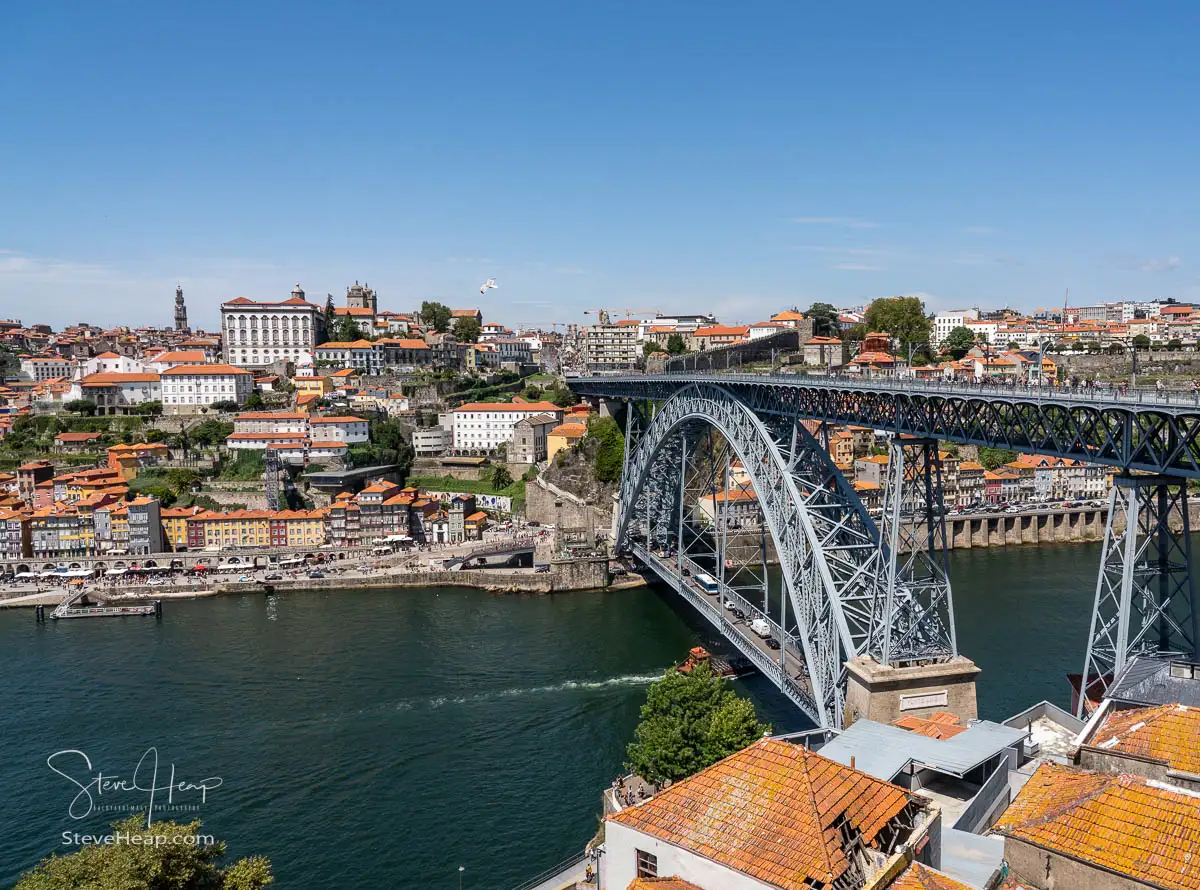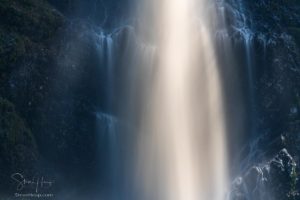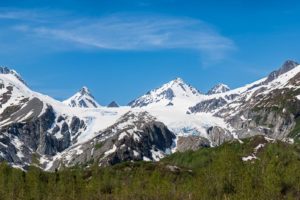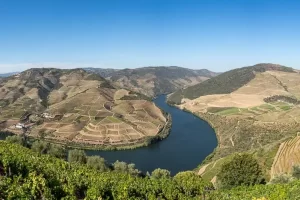This is the continuing review and story of our vacation in Portugal which was anchored around the Portugal’s River of Gold cruise with Viking. The introductory article about our days in Lisbon can be found here, together with a set of links to each of the chapters of the story.
After the brief visit to Coimbra, we arrived in the late afternoon in Porto and we settled into our cabin in the Viking Hemming, a boat specifically designed for this narrow and often very shallow river through the vineyards of the Port wine country in northern Portugal. We had only been on Viking Ocean cruises before and this time we had a standard balcony cabin – it was certainly smaller than the ocean cabin with a pretty narrow balcony, but perfectly comfortable for the two of us. There are the usual places to relax around the ship – including on the roof to watch the world going by, and dinner is served for everyone at the same time – probably to allow the small kitchen to be able to cope with the guests. The standard of the meals was great, as usual, and we tended to sit with the same group – the “English group” each evening.
However, that is getting ahead of myself. The first day on the boat was spent in port in Porto and our chosen tour was the walking tour of Porto. From what I recall, this was quite a demanding tour, as Porto is built on some steep hills, but very interesting!
We took a ferry across the river to the main part of town and started strolling along the waterfront, admiring the old houses, often with their ornate wall tiles.
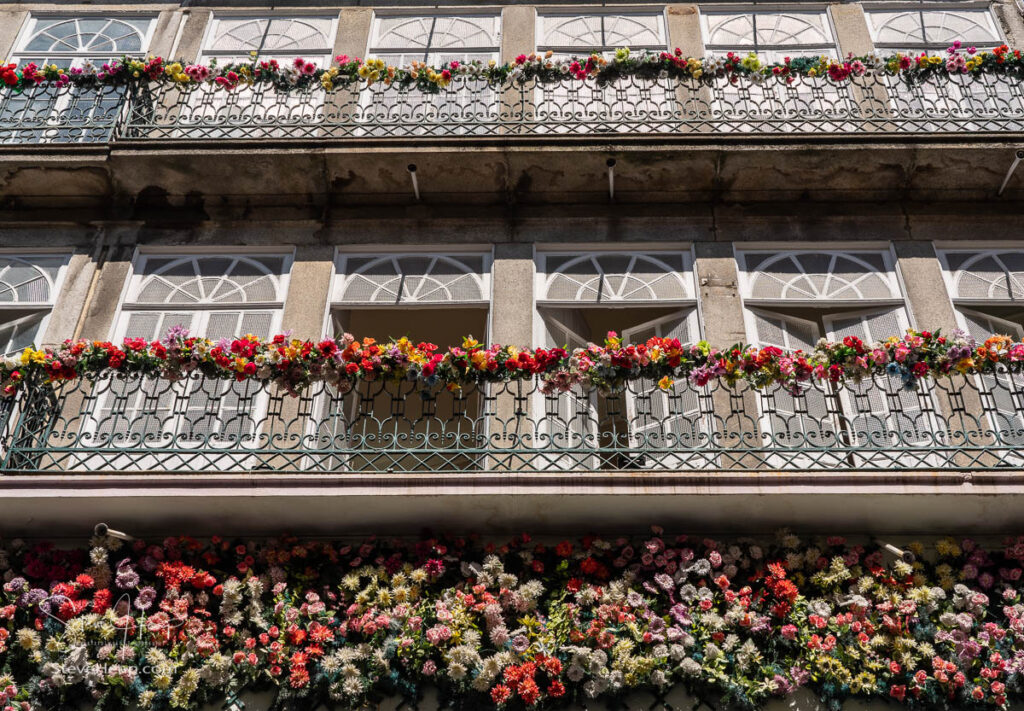
As we walked uphill from the river, I was struck with just how much building work was going on in the city, which is now a UNESCO World Heritage Site. Everywhere you looked over the red tiled roofs, there were cranes building or at least restoring the buildings.
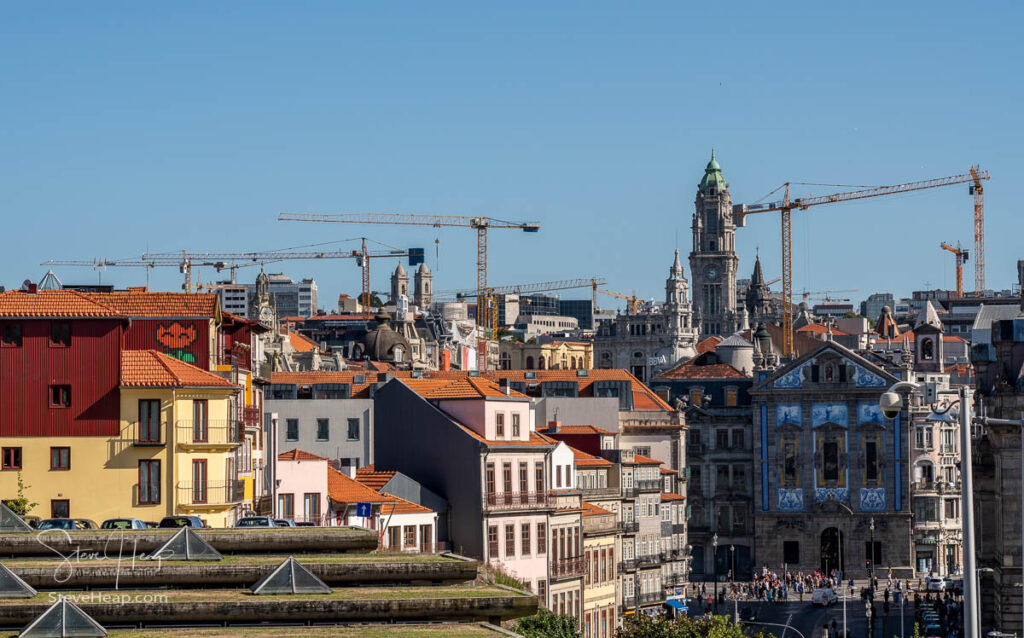
The roofs themselves made an intriguing pattern as you look down and across them to the higher areas of the city:
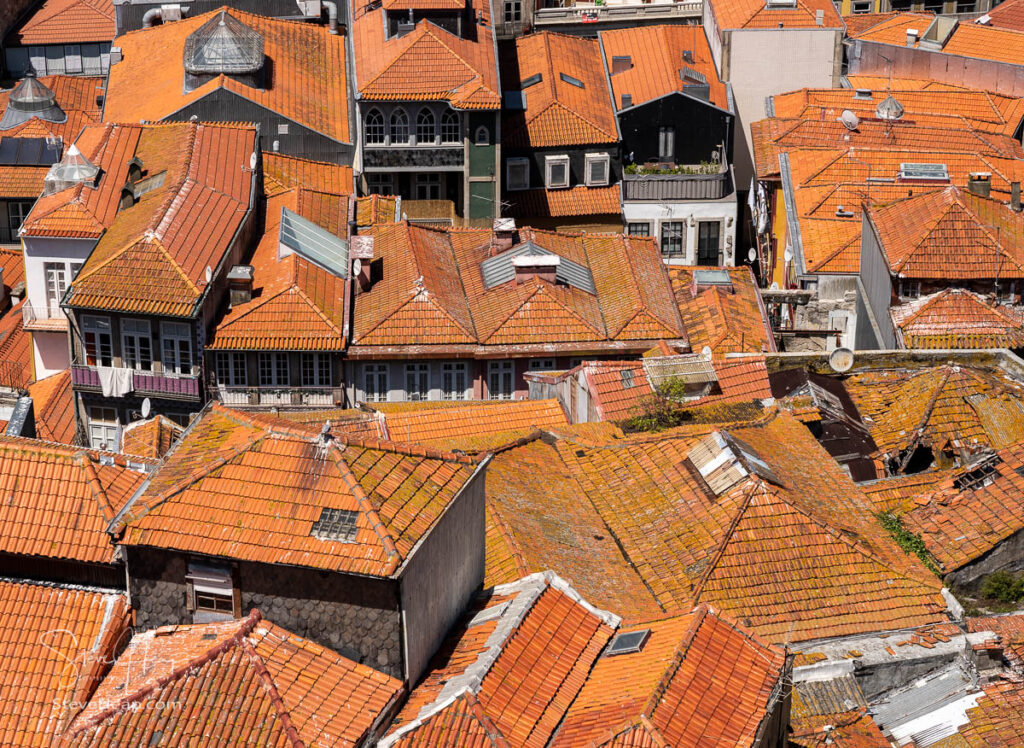
Some of the buildings in the city have definitely seen better days, which is not surprising given the relatively poor economic conditions in Portugal:
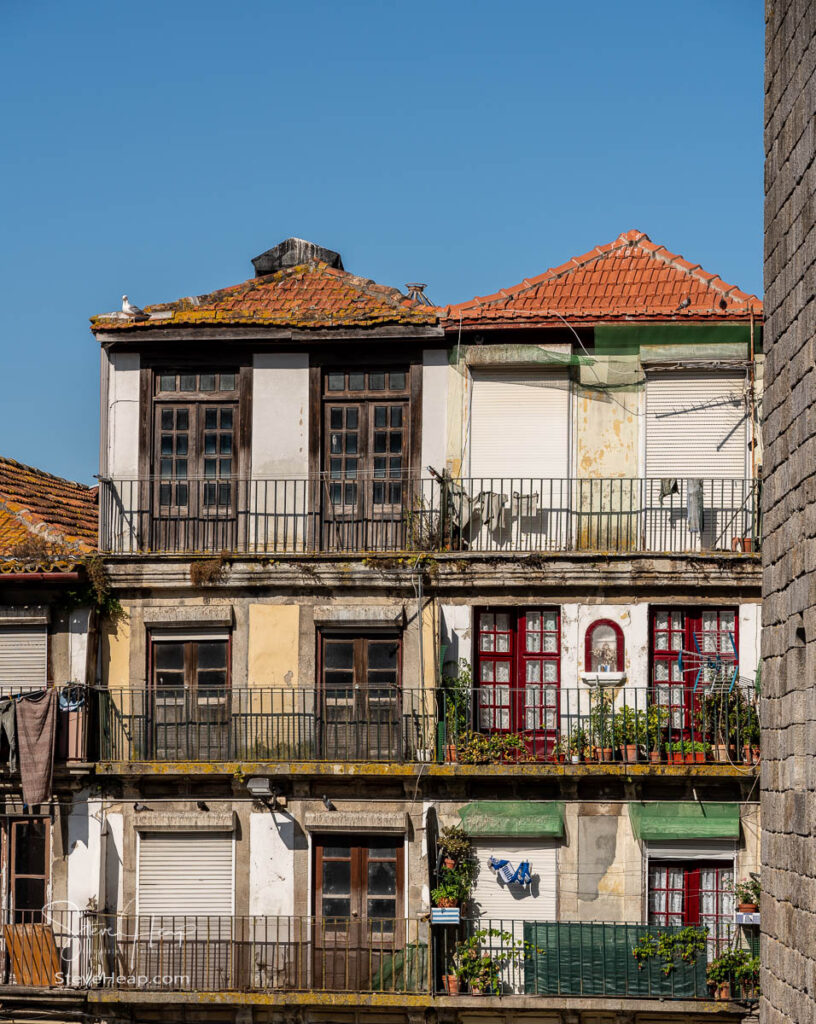
And other buildings had been delightfully restored:
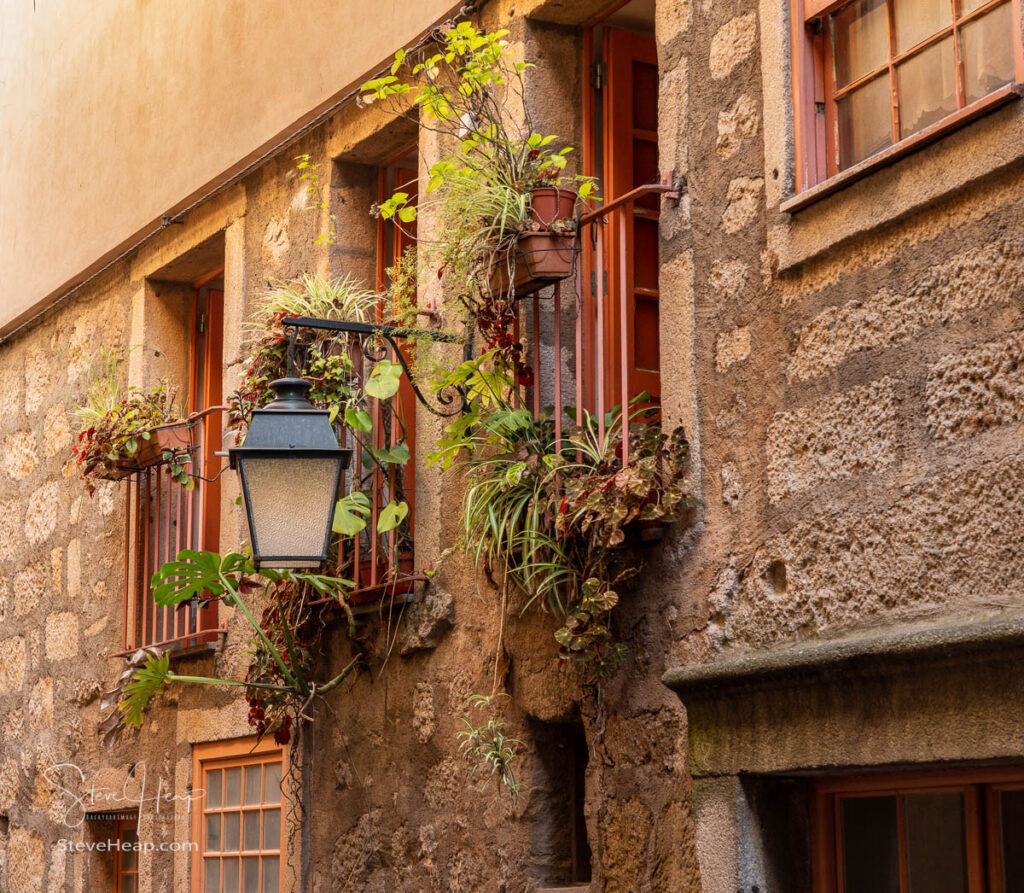
And some small streets just call out for investigation! An easy place to get lost!
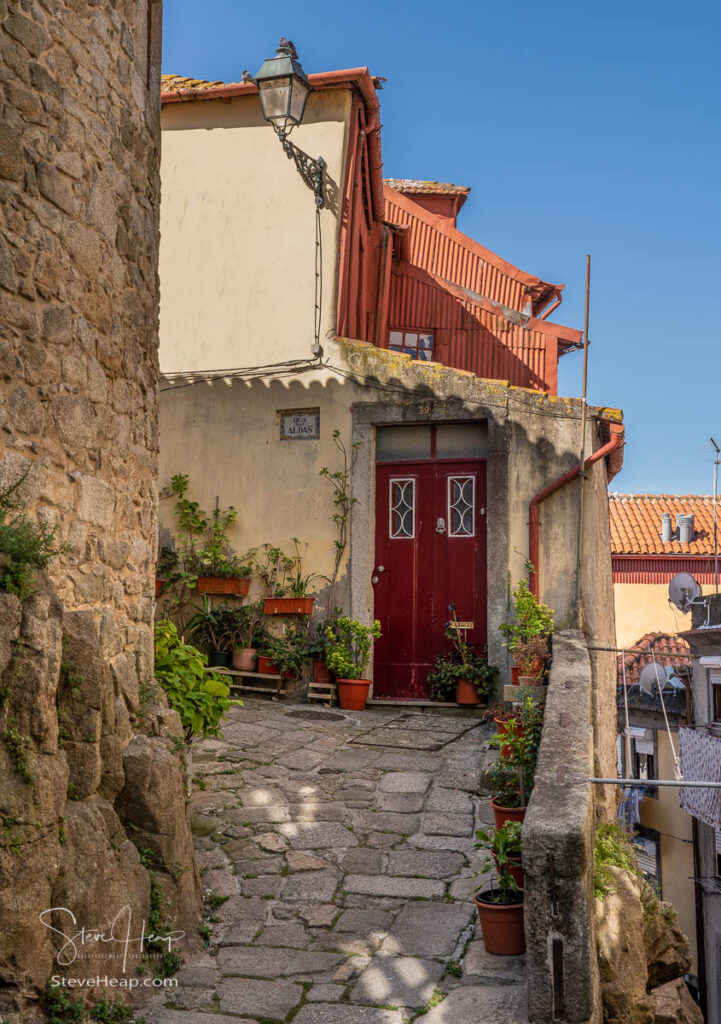
We passed by the Porto Cathedral (Oporto Se) which was started in the second half of the 12th Century and work continued for 400 years. Magnificent both on the outside and inside, it also has some lovely views over the city and, if you are active enough, you can climb one of the towers for an even better view down to the river and our boat on the far bank.
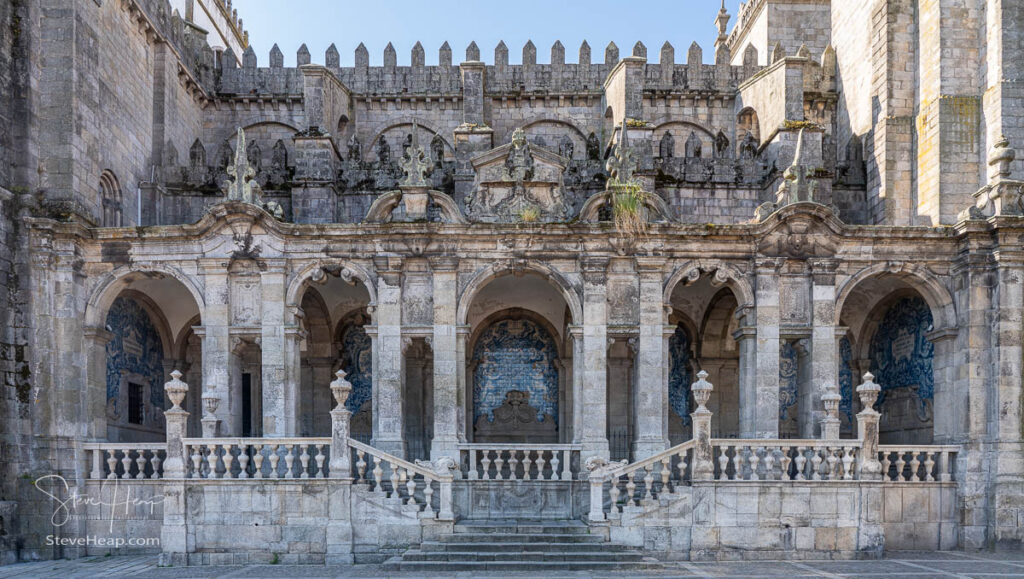
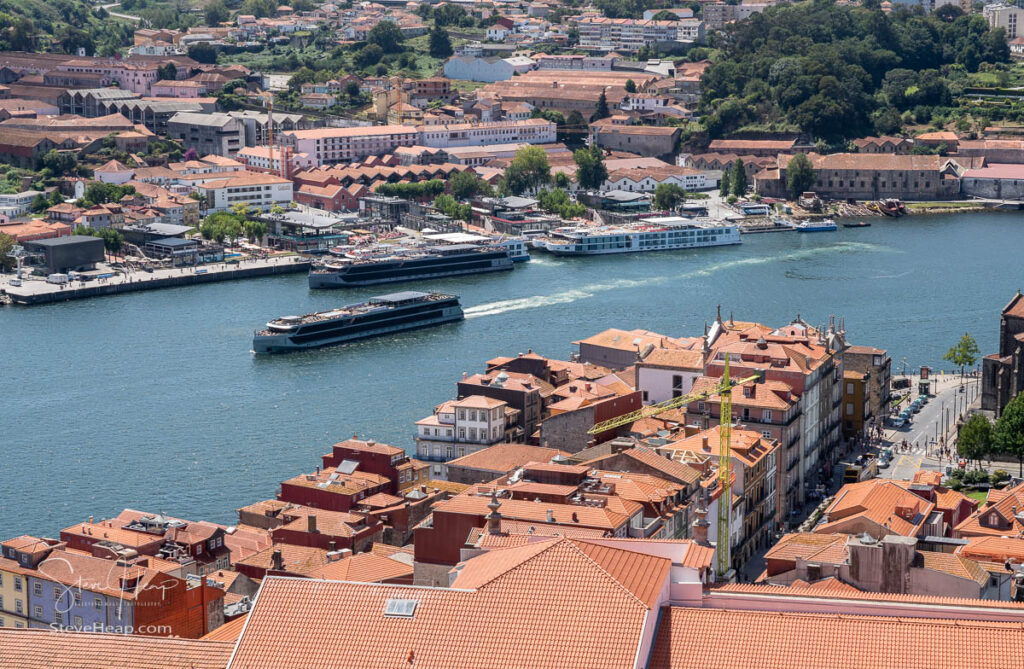
I’ll deviate a little from the actual flow of the walking tour. We passed by the cathedral on the walk, and at the very end of the tour, you could either just continue walking around the town or go back to the boat. We decided to continue and walked back to the cathedral to visit the inside and climb that tower to get the view above!
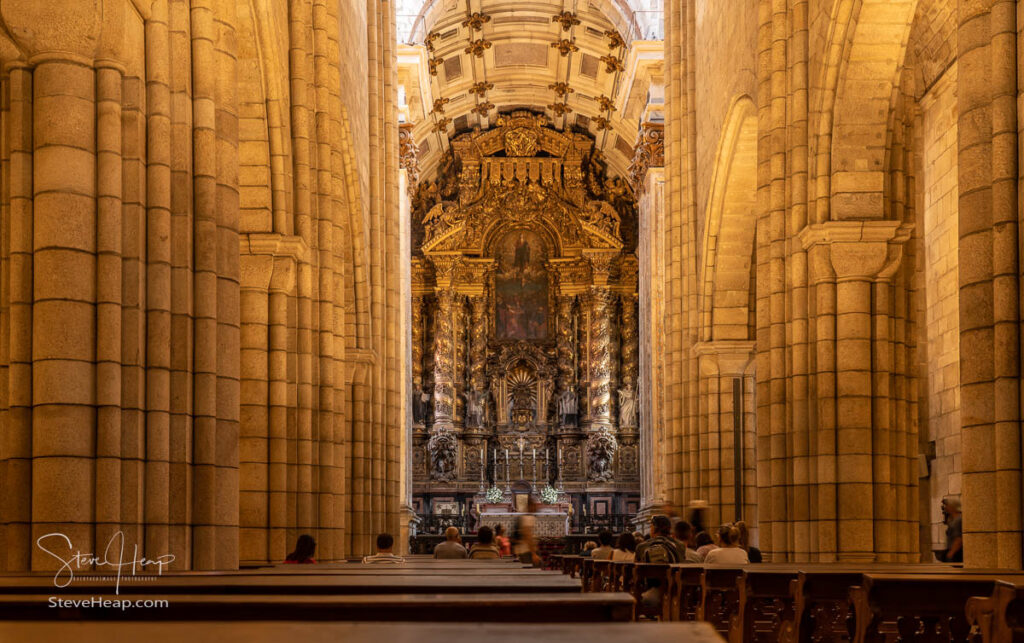
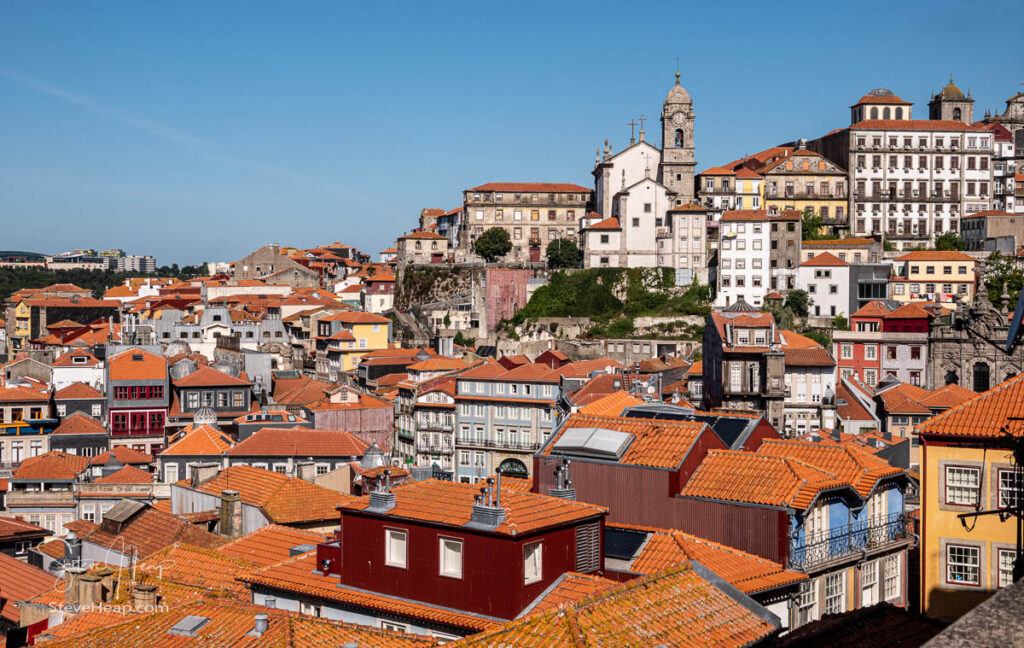
I’ve forgotten the exact route we took, but I do recall touring the extremely ornate interior of the main railway station, known as the Sao Bento station which was started in 1903 but various issues and delays led to the build taking 13 years to complete. I’m sure part of that was due to the design and firing of 20,000 azulejo tiles that have been installed in the vestibule of the station and were composed by Jorge Colaco. The first tiles were placed in 1905 and the tile project itself took 11 years to complete. The subjects cover a wide range from a chronology of transport through to famous events in the history of Portugal.
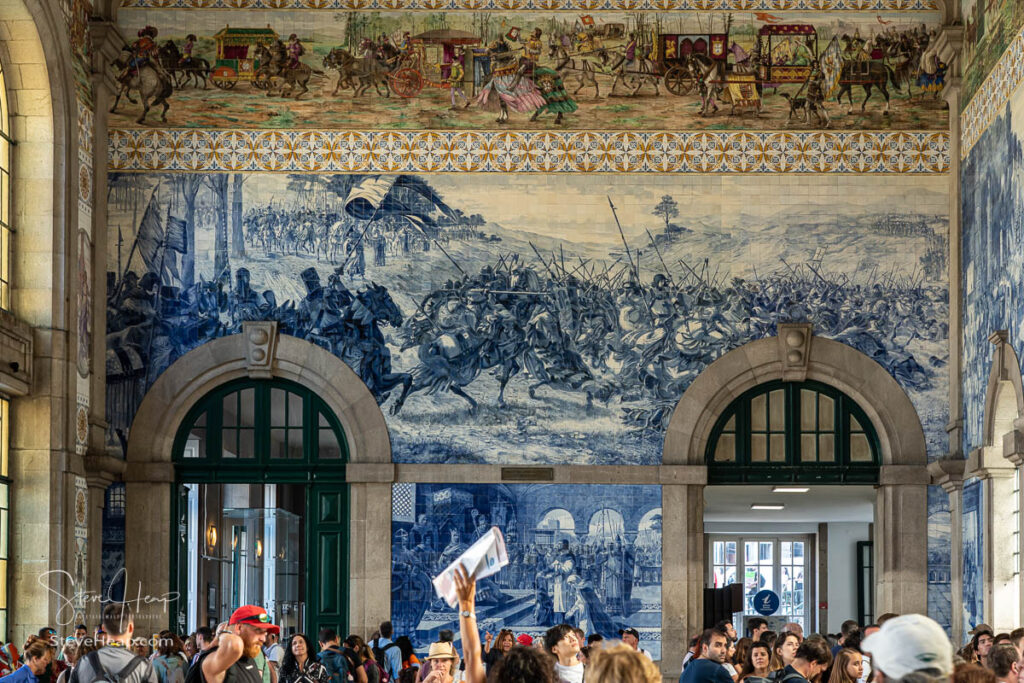
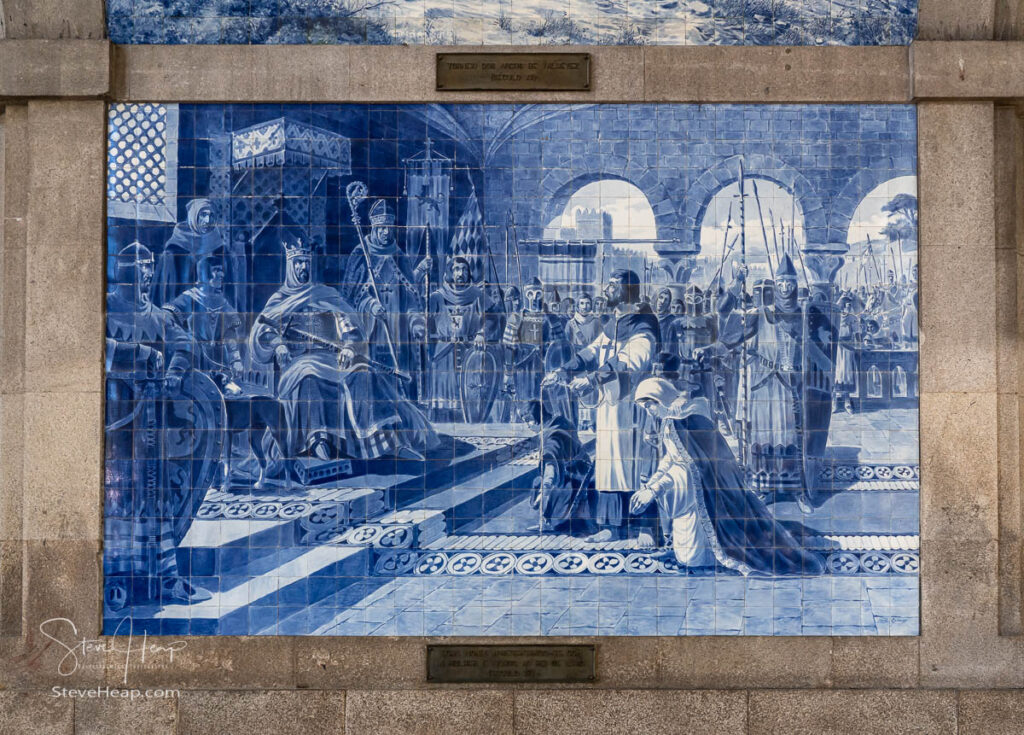
After more walking, we ended up at a lovely, and famous Restaurante a Brasileira for morning coffee and pastries, including these equally famous Pasteis de Nata:
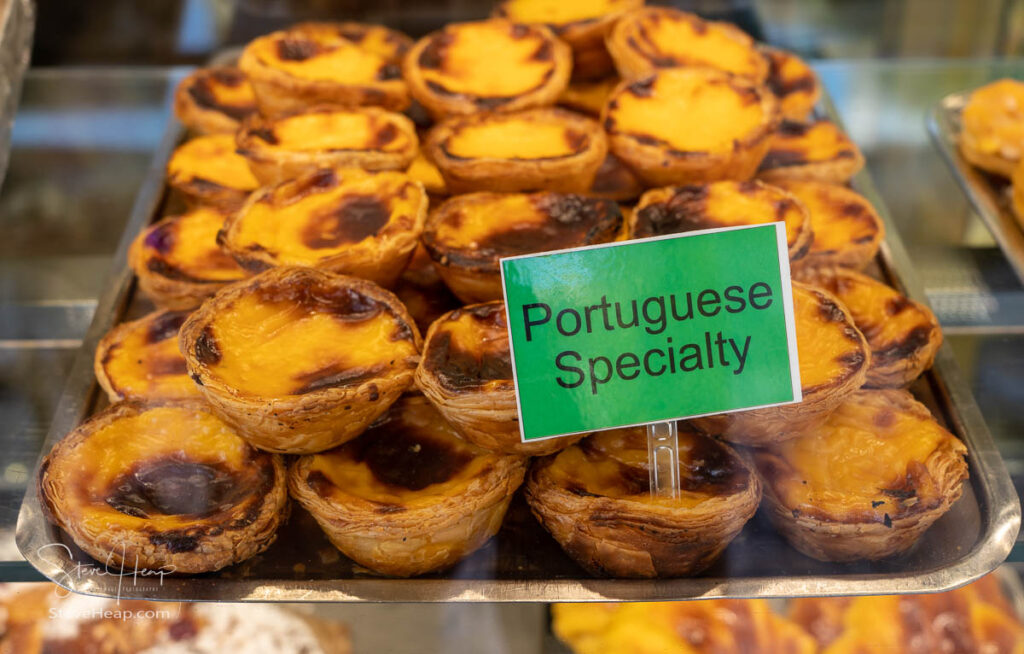
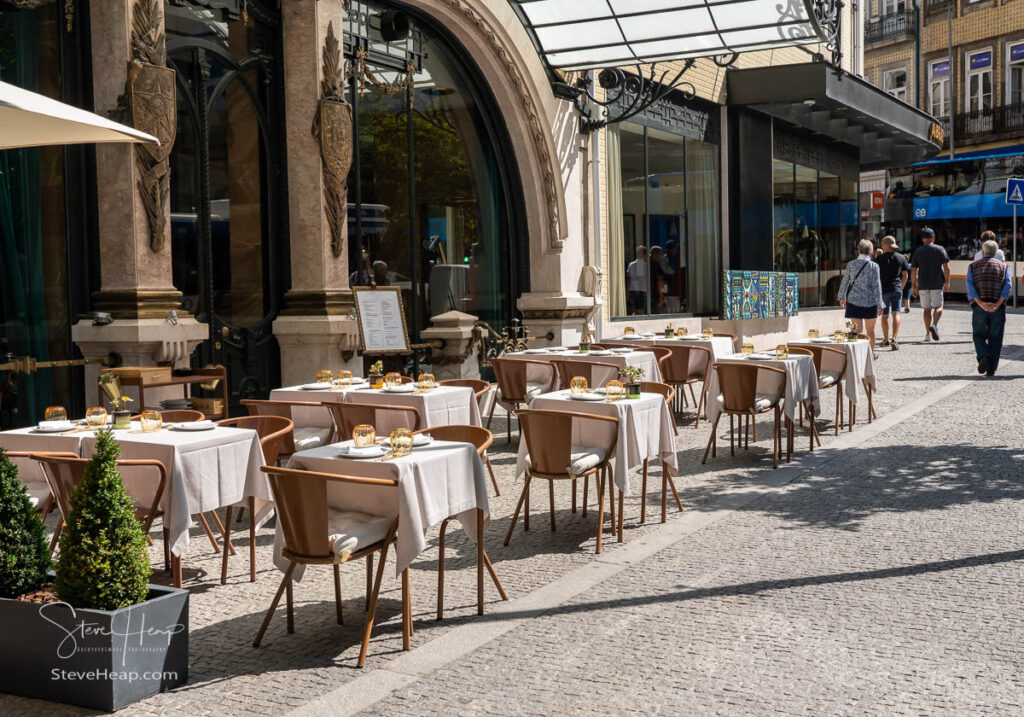
That was a very welcome break, but then we were off again.
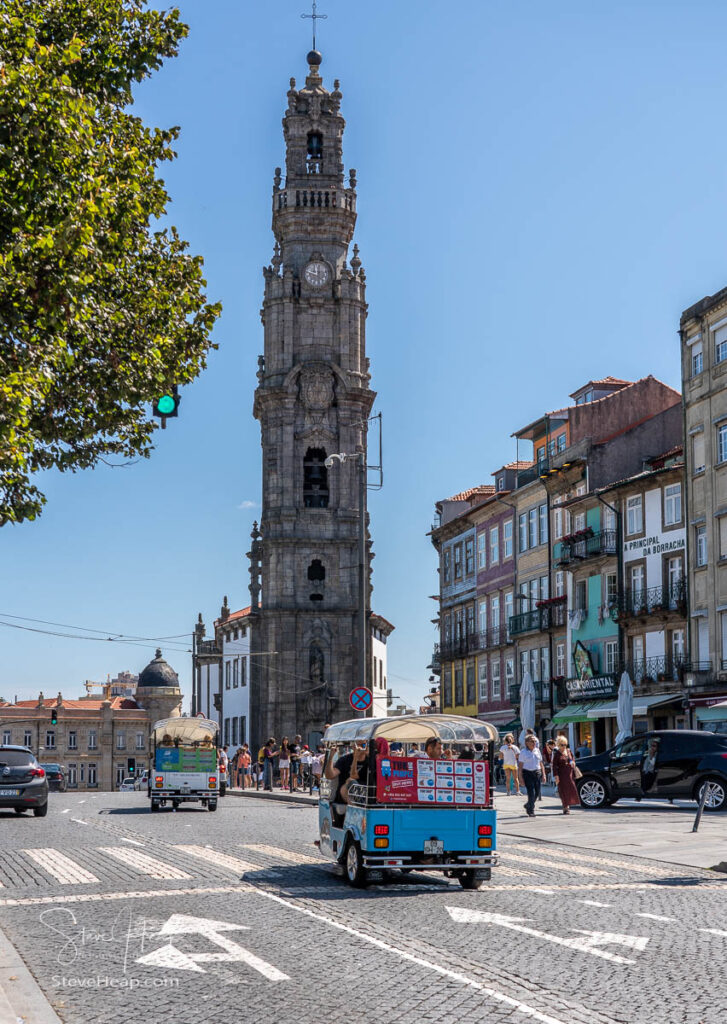
And past the famous Lello bookstore that was featured in one of the Harry Potter movies. And yes, you now have to pay to go in to look around, and that is a long line of people just waiting for that pleasure!
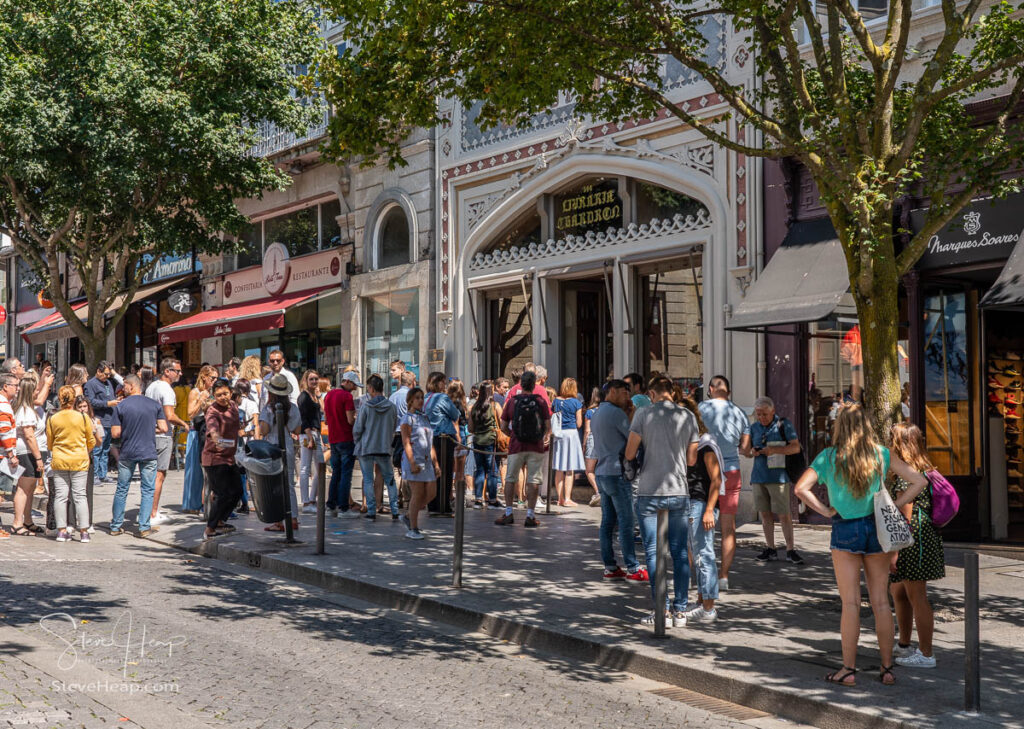
I believe the formal tour ended shortly after this, but as I mentioned, we continued our own exploration back to the Cathedral and to the Bishop’s Palace which was close by. This is the ceiling painting above the staircase in the palace:
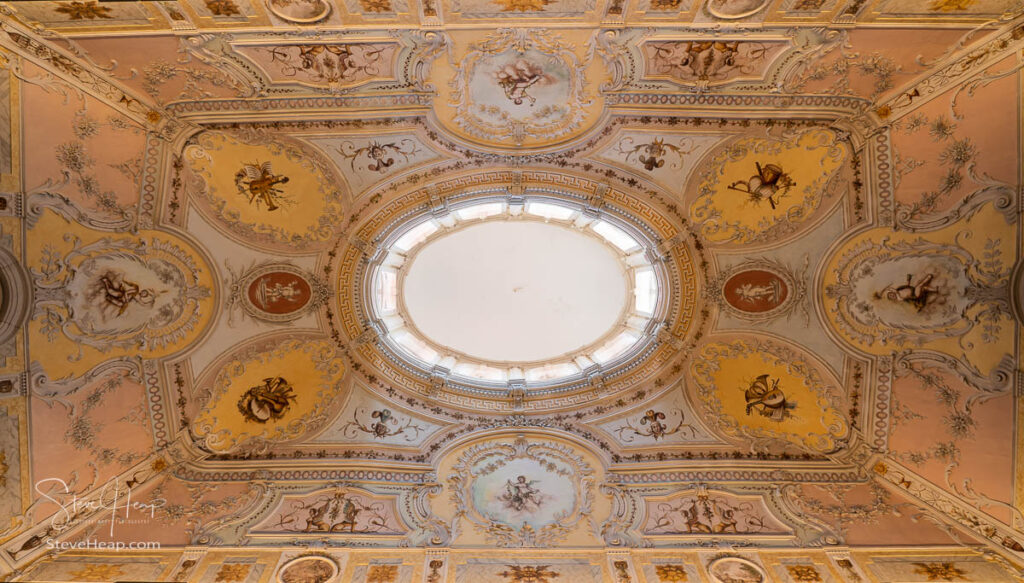
I don’t know just how many miles we walked, but we started to make our way back to the boat by crossing the Luis I bridge where we could see the entire panorama of the old town of Porto:
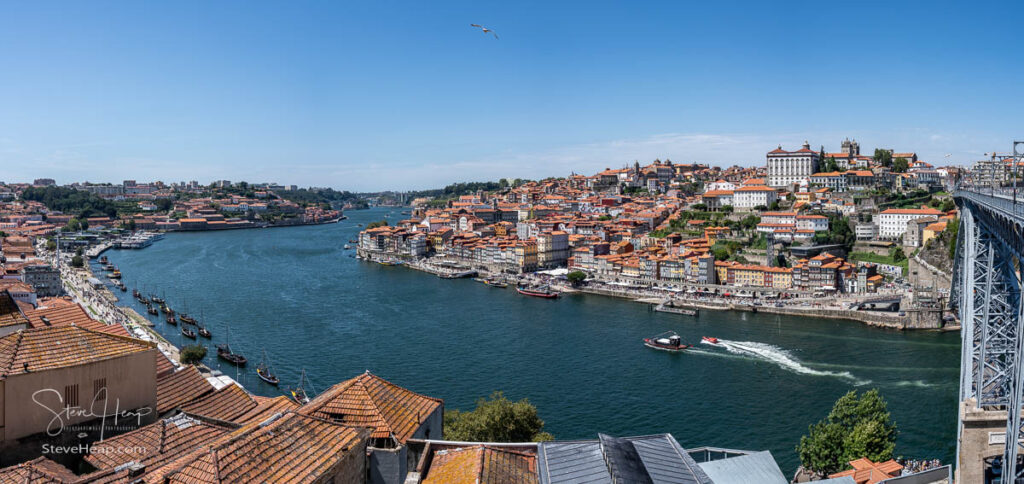
Our boat is way down in the top left-hand corner of this photo, so we still had some walking to do! Somewhere along the way, the sole detached from my shoe (at least it stayed in place but flapped around a bit) and that evening I searched far and wide for a store that sold hiking shoes. Not that easy to find in Porto to be honest!
We are getting closer now, but still time for a panorama from the waterside as we neared our destination:
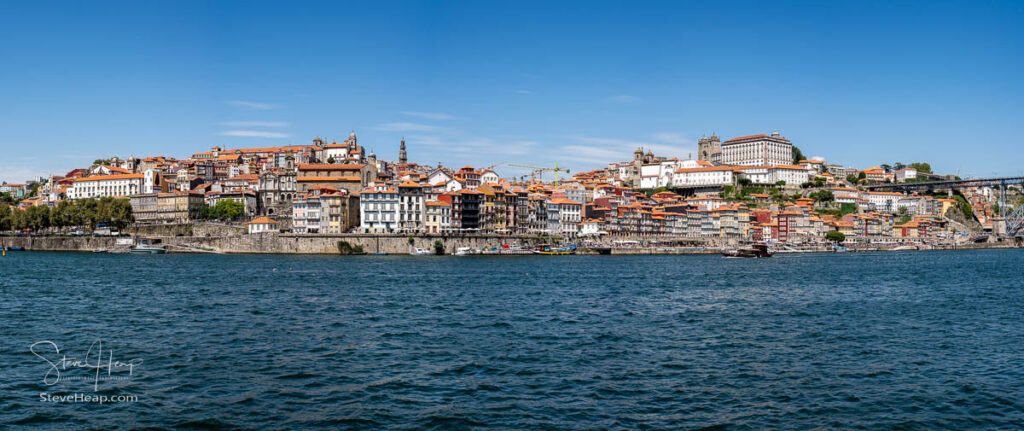
After quite a rest, then dinner, and then I decided that I had enough energy to venture out yet again to capture some nighttime shots of the city with the famous Rabelo boats that were originally designed to run the rapids down the Douro River carrying the barrels of port down to the warehouses in the city. It was a lovely calm evening, and the boats stayed just still enough to be captured in these long duration exposures:
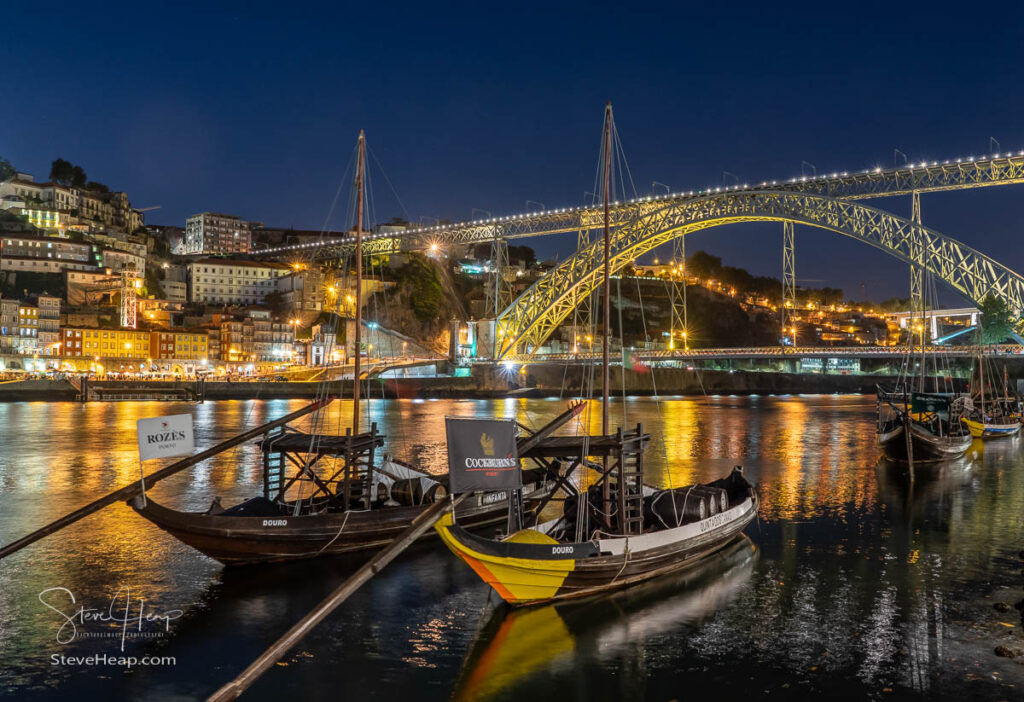
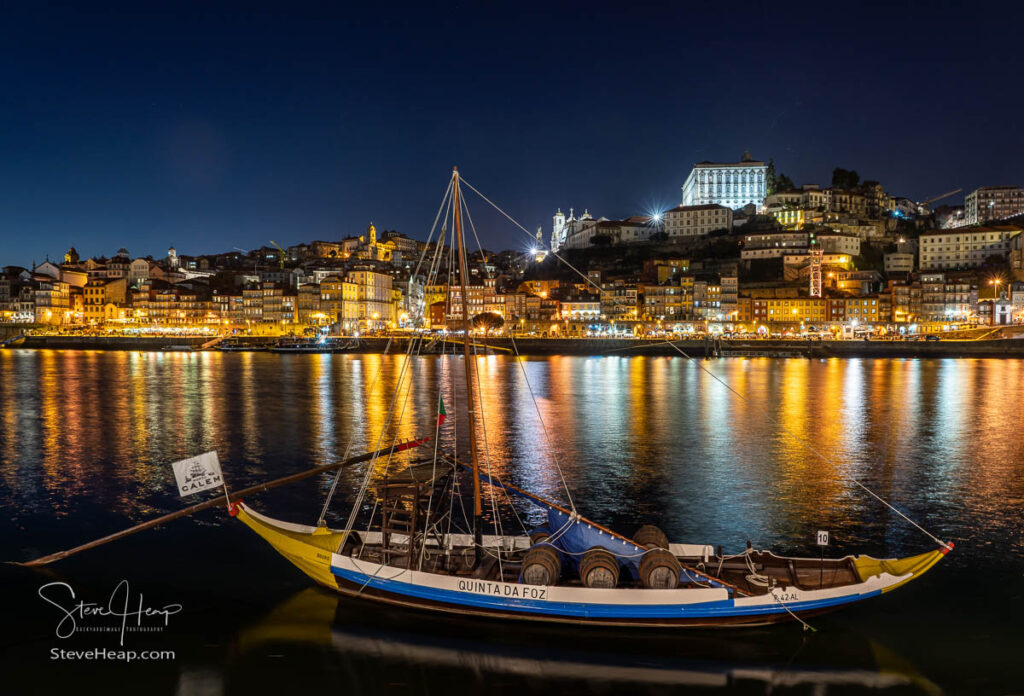
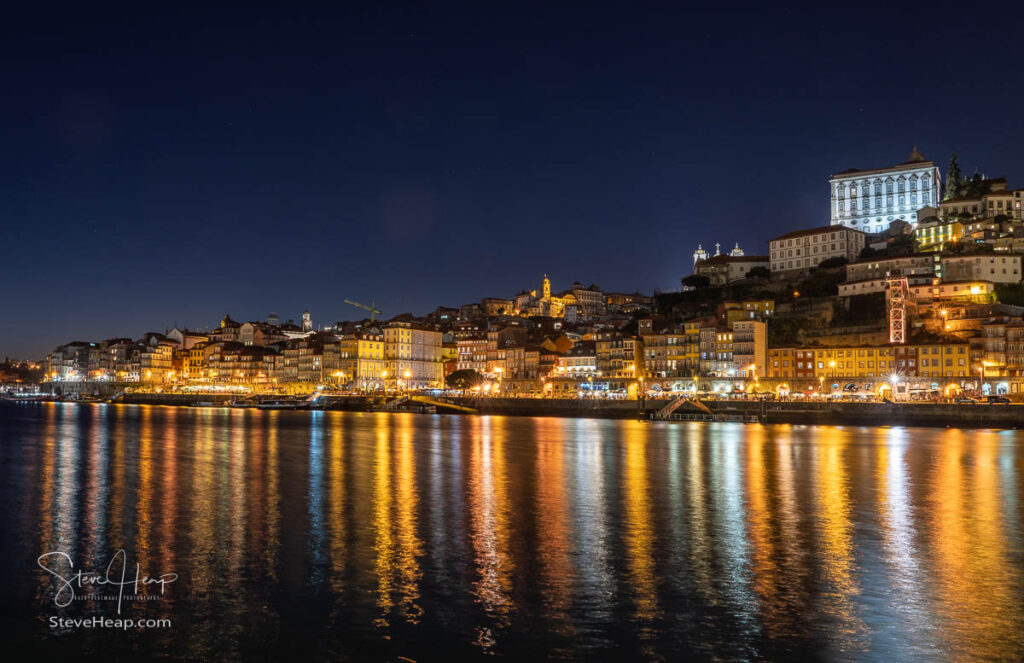
Finally, to bed! I wanted to be up early because the boat was departing at dawn (the boats don’t sail at night on this narrow and quite difficult river and so they try to make as much progress as possible while the light exists. But that is the story for the next article where we covered the river from Porto to Pinhao.
